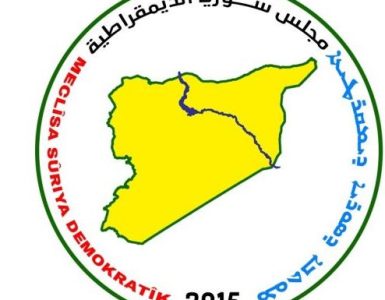By Sahar Al-Homsi
Homs, Syria (SDC) – Homs, emerging from the devastation of prolonged war, struggles to reconcile with its shattered reality. It grapples with the immense task of rebuilding communities, facing both economic hardship and deep social divisions. Though active combat has subsided, a pervasive sense of fear and uncertainty continues to grip the population. They are striving to reorganize their lives amid ongoing chaos.
Once a central hub of Syria, Homs now finds itself in a state of precarious recovery, its historical strategic importance making it a focal point for national events. The city endured relentless battles, ultimately falling under the control of the Syrian regime. Nowadays, despite superficial signs of normalcy, it remains deeply scarred. Security, economic, and social challenges form formidable barriers to its complete restoration.
Also: Turkey’s Strikes on the Tishrin Dam: Humanitarian Crisis and Regional Instability
The Security Situation: Between Gradual Improvement and Ongoing Challenges
Although major military confrontations have ceased, Homs continues to experience many security incidents. It was heavily damaged by the Syrian conflict for years. Now, it is undergoing a complex security restructuring process, with authorities working to strengthen stability and enforce law and order. Despite these efforts, residents remain concerned about ongoing issues like theft and personal assaults, anxiously awaiting more effective security measures.
An anonymous resident acknowledges that the situation has improved compared to previous years. He also emphasizes that citizens still need stronger security guarantees to live normal lives.
Economic Crisis: Reconstruction Challenges and Limited Opportunities
Despite discussions about future economic projects, Homs is still suffering from a severe economic crisis. High unemployment, limited investment, and rising living costs are exacerbating the suffering of residents. Markets struggle with shortages of essential goods, impacting daily life, while business owners face difficulties due to limited resources and reduced consumer spending.
“There is a commercial activity, but it is limited and conditions remain difficult. We hope that authorities take decisive action to support the economy and revitalize markets,”a local merchant said.
Social Fabric: Efforts to Bridge the Gap
Like other Syrian cities, Homs continues to experience the consequences of conflict-induced demographic and social changes. While some internally displaced persons (IDPs) have returned, true community reconciliation requires more extensive efforts to rebuild social connections damaged during the conflict. Local initiatives and dialogue meetings are ongoing attempts to bridge divides and foster trust among residents.
Also: Hama’s New Reality: Liberation After the Fall of Authoritarianism
National Dialogue Conference: Controversy Over Representation and Outcomes
As part of the efforts to advance the national dialogue process, a dialogue conference was held on February 25, with the participation of a number of political and civil figures. However, it faced widespread criticism regarding its representation of all stakeholders.
Political activist Kamal Al-Assad argued that holding the conference was a crucial step, but it lacked sufficient inclusiveness, undermining its credibility. Human rights activist Louay Al-Mahmoud stressed the need for dialogue based on clear principles and genuine participation.
“There is a need for a comprehensive national dialogue, and the conference was a first step, but it requires further development to have a greater impact on the broader landscape,” independent journalist Reem Hassan emphasized.
The conference intended to facilitate negotiations. However, it failed to include many key political and social actors. The preparatory committee was criticized for its lack of balance, and the conference produced no concrete commitments or a clear roadmap.
“The conference was merely an attempt to legitimize pre-prepared solutions, rather than serving as a genuine platform for discussing the future of Syria,” political analyst Samer Al-Ali said.
The fundamental question remains: can Homs reclaim its former vitality and diversity? The answer depends on the new Syrian administration’s commitment to addressing the city’s problems effectively. Superficial solutions will not suffice; genuine action is needed. The fate of Homs reflects the broader challenges facing Syria. Decision-makers must prioritize the national interest over their agendas to create a stable and just future.
Homs serves as a microcosm of Syria, a nation enduring conflict but still clinging to hope for renewal.




